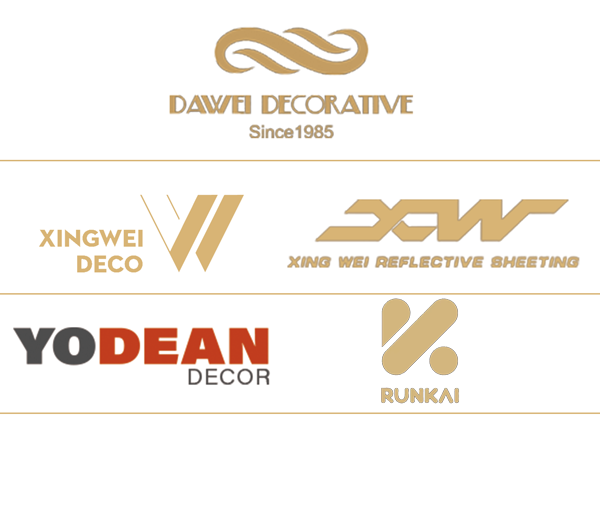If you have ever wondered what is safety reflective vest, you are not alone. There are several types of hi-vis vests, including Class 1 and Class 2 models. But which vest should you get? Here’s a brief guide on the different types of hi-vis vests. In addition to enhancing your safety while working, hi-vis vests also have other benefits. They make you more visible to other drivers. In addition to enhancing your visibility, they also keep you warm.
Class 1 hi-vis vests
High-visibility clothing is essential for workers in dangerous environments. High-vis clothing helps workers stand out among distracted drivers. There are different classes of hi-vis clothing, but all of them serve the same purpose: to make workers visible. In general, a worker wearing a class 1 vest is more visible than someone in a class 2 vest. There are also many benefits of wearing a class 2 hi-vis vest.
To meet ANSI safety standards, Class 1 hi-vis vests should have 155 square inches of reflective tape. This is equivalent to approximately 6.46 linear feet of two-inch reflective tape. The stripes should run around the center of the vest and over each shoulder. They should be made of a bright orange or yellow color. The reflective stripes should be readable by other drivers in the area.
High-visibility clothing must also meet ANSI/ISEA standards. These standards are determined by the amount of reflective tape and high-visibility fabric on each garment. High-visibility fabrics are fluorescent and are designed to make workers visible in daylight hours. Reflective stripes are meant to reflect back onto approaching vehicles, making the wearer more visible in low-light conditions. ANSI/ISEA 107 also sets performance standards for the materials used to make high-vis clothes.
Class 2 and 3 vests are reserved for workers in high-traffic areas. They should have the greatest retroreflective striping and background material. The background material should cover at least 1240 square inches. The reflective tape should be on the shoulders, arms, legs, and chest. Moreover, Hi-Viz also carries a large range of high-vis clothing and pants. They offer customizing options as well.
Another kind of high-vis vests is class 1. This type of high-vis safety reflective vests is intended for workers who work in areas that are isolated from traffic and move at low speeds. For instance, repairing sidewalks in a residential neighborhood is a class 1 activity. However, in most cases, workers should wear class 2 hi-vis vests. You may also be required to wear a class 2 vest, depending on the type of work you are doing.
Class 2 hi-vis vests
Hi-visibility and safety are closely related, so you should choose a safety reflective vest that meets these requirements. Class 2 vests are ANSI certified, and contain a minimum of 201 square inches of retro-reflective material, as well as large reflective stripes on the chest. The reflective stripes should be visible from all directions. Class 2 safety vests also come in a variety of colors.
High-visibility ANSI-rated safety vests are essential for working in traffic-heavy environments. They make workers more visible, especially in low-light conditions. Many manufacturers offer various styles, from solid hi-vis to hi-vis mesh. Many of these vests also promote a business. You can get them printed for as little as 99 cents, making them a great investment.
ANSI-rated Class 2 Hi-vis safety vests provide greater visibility on job sites and in inclement weather. Workers must wear these vests when working in areas where visibility is important, such as on a road or on a utility pole. Many law enforcement agencies, toll gate personnel, and school crossing guards also use class 2 safety vests. They can be customized with text or logos to improve safety.
These vests are more lightweight than their Class 1 counterparts, and offer customization options. In addition to being lightweight, they also offer enhanced visibility for job sites. They’re often required for workers who work in areas where traffic flow is over 25 miles per hour. Their reflective striping should cover seven hundred square inches and be 360-degree horizontal. In addition to reflective material, they have a high-visibility yellow or orange background, and can reflect more than 25 miles per hour of light.
The high-visibility clothing should fit properly. Wear it as intended, and consider additional clothing underneath. Moreover, it should sit comfortably on the body. During work, it should not cause any discomfort. The fabric should be light and stretchy, and it should not be too tight or too loose. Wear it under another garment to avoid chafing. It should also be easy to wear with other clothing.
Class 3 hi-vis vests
For optimum visibility, workers should wear Safety Reflective Vests class 3 or higher. Class 3 vests are typically worn by construction workers, utility workers, road crews, flaggers, surveyors, emergency responders, and others working in areas with high-traffic. Class 3 vests contain significantly more reflective tape and high visibility fabric. Moreover, they include long sleeves and other features that make workers more visible in dimly lit conditions.
The ANSI class 3 hi-vis safety vest is designed to provide maximum visibility in inclement weather or high-traffic areas. It features dual 2-inch-wide reflective stripes, a front zipper closure, and 4 exterior pockets. These vests are highly customizable and offer added safety while working in difficult environments. To choose a hi-vis vest, make sure to check the safety standards of the company you work for and the location you’ll be working in.
If your workplace is in a high-traffic area, you may want to consider buying a Class 2 safety vest. The design of Class 2 safety vests depends on the activity that you’ll be performing. You’ll need to be very visible on the road to avoid getting struck by an oncoming vehicle. For instance, Class 2 safety vests must contain a minimum of seventy square inches of background material and a maximum of 310 square inches of retroreflective striping. This is because drivers who are traveling at highway speeds or at night need to be visible.
Choose the type of material and color of your hi-vis safety vest. Waterproof and breathable vests are preferred for heavy-traffic environments. Both have AATCC and ASTM standards. Safety reflective vests can be tear-resistant and feature a variety of pockets. They have grommet holes and can be purchased in different colors. Safety reflective vests can help protect workers in hazardous work areas.
If you’re looking for the best safety vest for your worksite, class 3 hi-vis vests can make the difference. You’ll be able to spot you in a crowd of vehicles and still be visible. With these safety vests, workers can be more visible to drivers, pedestrians, and other pedestrians.
Class 4 hi-vis vests
If you need to wear a safety reflective vest or a hi-vis vest for work purposes, you’ve come to the right place. Class 4 hi-vis vests provide increased visibility in areas with poor lighting. They’re designed to make workers more visible and avoid injury. These vests come in several different colors, including orange and yellow. They also feature various pockets and grommets for tools. Listed below are some benefits of wearing a safety vest in these industries.
Safety reflective vests are essential for working conditions where visibility is crucial. This type of vest provides a better view of work areas and is ideal for construction workers and other professionals working in low-light conditions. They also provide improved visibility, making them an excellent choice for working in roads and traffic. Hi-vis vests with reflective stripes have a specialized design for construction workers. They come in solid color and mesh color options.
The reflective material in a safety reflective vest can be black, white, gray, or fluorescent. A high-vis vest must have a certain amount of retroreflective material, which bounces light back in the opposite direction. Retroreflective materials are highly visible at night and are often made from gray, white, or silver. Combined-Performance vests feature a retroreflective material and meet the requirements of the background material. They may also feature striping in a color that matches the background material. This gives them the best daytime visibility.
High-visibility safety apparel plays an essential role in a worksite. Its high-visibility design is essential for worker safety in low-light and different weather conditions. The most popular hi-vis gear is the safety vest. Their low cost and effective design make them one of the most popular pieces of hi-vis gear. So, when it comes to choosing hi-vis gear, be sure to look for a class-rated vest!
When selecting a safety reflective vest, make sure to select the right color. The most visible color is white, but you should avoid yellow or fluorescent green when working in areas with low-light. You can also choose fluorescent green, fluorescent red, or fluorescent blue vests, depending on the worksite’s requirements. You should also pay attention to the material that the vest is made of. If your vest doesn’t meet these requirements, you might need a different color, such as black or blue.




I want to get some clothes that I can wear while riding my motorcycle at night. It makes sense that I would want to get high visibility vests to help me out with this! That seems like a good way to ensure that I handle things correctly.
I agreed when you stated that safety reflective vests are crucial for working situations where visibility is critical. My friend wants to supply his team with Hi Vis vests with logo. I should advise him to partner with a vendor that provides high-quality vests.